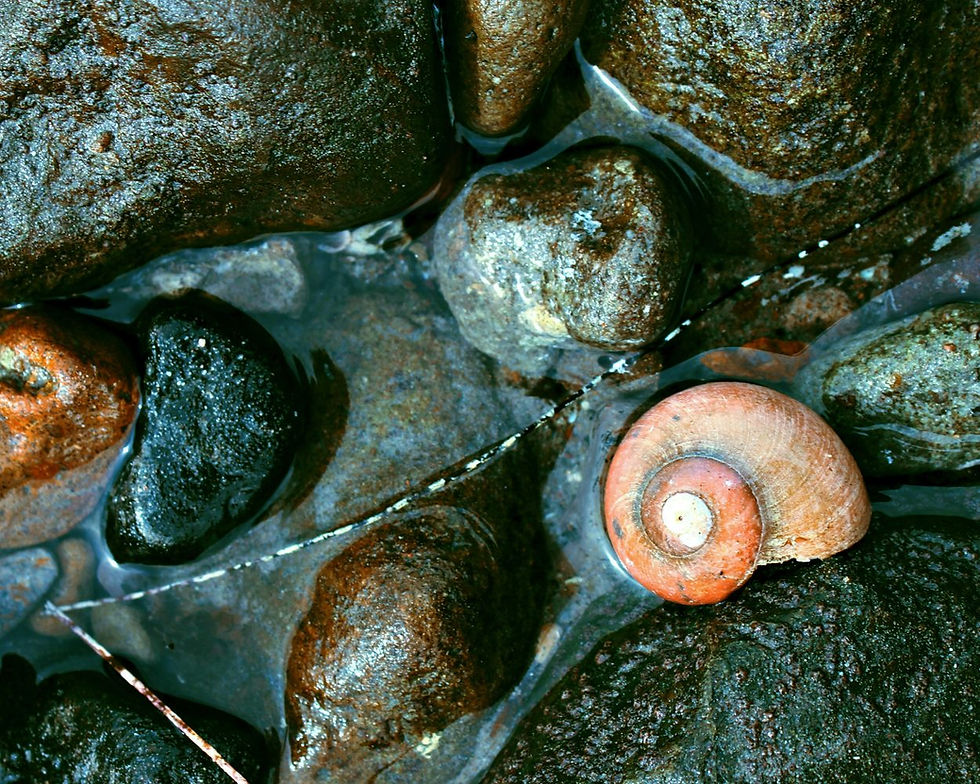Seashells: Enchanting Symbols of Life, Death and Remembrance
- Heather Davis

- Apr 17, 2019
- 2 min read
Updated: Mar 6, 2020
"Seashells remind us that every passing life leaves something beautiful behind." – Unknown
What begins as the body and outer protective layer of diverse and vibrant sea animals, later wash ashore vacant and lifeless, as beautiful, captivating skeletal remains. Seashells are splendid examples of the beauty left behind every life following death; the body being only a shell, where the soul continues on.
The intricate spiral shapes of some seashells symbolize eternal life and a safe journey from this world.
Shells in Water features a peaceful pink spiral resting among silvery tidepools in southern California.
For forever and a day
Seashells have been symbols of life and death in religious beliefs since prehistoric times and have been used in funeral rituals throughout history. Shells were included in tombs to offer protection in ancient Egypt. They were placed as offerings in burials, as containers or jewelry, as well as in archeological remains in ancient Mesopotamia.
Anthropologists in west-central Africa found burial locations nearly full of shell-adorned graves. The ancient Bakongo people and their descendants believed that the shell was a basin that carried and protected the soul on way to eternal life. Those same deep West African traditions were transported to America’s South with the slave trade in the 18th and 19th centuries.
In coastal South Carolina, many African American cemeteries have seashell-adorned gravesites, believing the various patterns and types might throw off any wicked spirits and lead loved ones back across the sea to their homeland and the hereafter.
The seashell as a token of remembrance
Seashells placed at someone’s grave or altar is a showing that someone is remembered and honored. Seashells also have come to symbolize pilgrimage, especially one made to a final resting place. The scallop shell was used by St. James during his own pilgrimage and then by his followers that traveled to his shrine in Spain during the 9th century. Today, seashells left behind on a burial site often represents a loved one’s pilgrimage to the grave; a little token in remembrance of the journey.
"One lives in the hope of becoming a memory.” – Antonio Porchia
These colorful artifacts help remind us that those that pass over never truly go away, but still abide in us forever. And a day.
#shells #seashells #death #seaanimals #soul #body #eternallife #symbol #ShellsinWater #UrbanNaturalDesigns #HeatherDavis #handcraftedartwork #tidepool #SouthernCalifornia #Malibu #funeralrituals #ancientEgypt #ancientMesopotamia #tombs #gravesites #Bakongo #cemeteries #remembrance #altar #pilgrimage #StJames #AntonioPorchia #scallopshell #burials

.jpg)








Comments